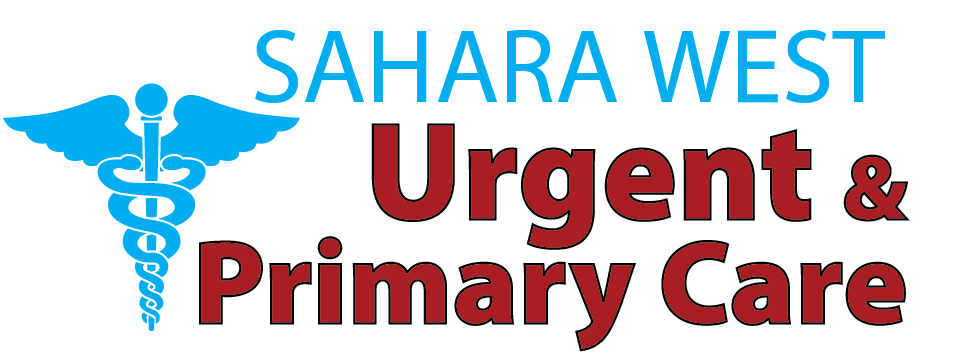The health screening field has undergone a significant transformation with the introduction of rapid antigen tests, which provide quick results directly from the medical laboratory. But how do rapid antigen tests work, what are their limitations, and how should they be used properly? It is all about the science, the processes, precision, and best-practice ideas to enable you to use these tools with growth and knowledge.
What Is a Rapid Antigen Test?
Rapid antigen test A rapid antigen test is a type of diagnostic test focused on the presence of particular viral proteins, also known as an antigen, usually of respiratory infectious agents such as SARS-CoV-2. Contrary to PCR tests developed in the laboratory, these kits take only 15 to 30 minutes to produce. The work is based on the basis of adhering the viral proteins to antibodies that are developed on a lateral strip, resulting in a visible line. They are convenient and quick to produce, thus they are suitable to use at home, before traveling, during a workday, and even at school. Following their benefits and the trade register is important to use reliably.
The Science Behind Antigen Detection
Antigens are those molecules that produce immune reactions. During viral infections, antigens such as the spike or the nucleocapsid antigens of SARS‑CoV are released into the nasal mucus. A rapid antigen test usually works using a lateral-flow immunoassay: a liquid sample is added to a test strip surface that is coated with antibodies against a viral antigen. In the case when the antigen is present, it binds with antibodies conjugated with dye particles. When antigen antigen-antibody complex moves through the strip, they are grabbed by the next line of fixed antibodies to meet a colored line, which would indicate the result as positive. This is a clever tie of molecules, and this is how in rapid antigen test works, which detects infection on the nano scale.
Components of a Rapid Antigen Test Kit
In every kit, there is a sterile swab to collect the sample, a tube filled with the buffer solution to elute the antigens from the swab, and a lateral-flow cassette that has been embedded with the antibodies and the control reagents. The strip is tested within a plastic case which had slotted result windows. The buffer ruptures viral particles and maintains the antigens, which move down the strip. Within the cassette, the detection antibodies are conjugated to the dye and bound to a pad known as the conjugate pad within the cassette; and the antibodies are fixed in the nitrocellulose membrane, at the test and control lines. It is such an integrated design that makes these kits portable, easy to use, and effective in producing results.
Step‑by‑Step Test Procedure
Then, take a sample either with a cotton swab inside your nose or throat, according to the specifications of your kit. Take the swab and put it into the buffer tube, and rotate till it mixes; this will free up viral proteins into the sample. Then fill multiple drops of the solution in the sample well of the cassette. The strip works by capillary action through which the liquid travels. Place the test at room temperature and incubate for the necessary time-15 minutes in most cases. And then read off the results: two lines are a positive (viral antigens present), a single line at control is negative (no antigen detected), and the absence of the control line implies that the test is not valid, and repeat using a fresh kit. It is a very important step in test reliability, which is simple but accurate at the same time.
Interpreting Test Results
One would be expected to read results within a particular time frame (normally between 15-20 minutes). Reading either too soon or too late can miss a developing test line or show a false line. An observable line as an indicator that the test was successful; the emergence of a second line, whether it is faint or not, would mean a positive antigen detection. A negative result will show one control lin,e but in case the symptoms do not show improvement or there was exposure to the virus, follow up with PCR. Lack of control line indicates test failure, dispose of the test and re-run it using a new kit. It is important to act in time and correctly interpret the results; that is how the rapid antigen testing functions efficiently even in real-life conditions.
Accuracy: Sensitivity and Specificity
The sensitivity of a test is the degree to which the test can be able to detect infected persons. The perceived sensitivity of rapid antigen tests is 7090 when the viral load is high. Specificity entails the accurate identification of the non-infected; it is usually more than 95%. That is, rapid antigen tests can be unreliable, as negative results, and therefore, the best they can do is the “Cross Rapid” test, which is the main reason why these tests cannot detect early signs of the infection or when the viral load is low. At best, they can provide false negative results, and a minimum, they can provide false positive results. Interpretation of these metrics makes it easier to understand the role played by rapid antigen tests in the trade-off between speed and diagnostic sensitivity.
Rapid Antigen Tests Compared to PCR
PCR tests can amplify viral genetic material and have gold‑standard accuracy (95%+), though results need hours or days to be reported, and venue-based lab capabilities. Rapid antigen tests compromise accuracy to be faster, less expensive (often less than 30 dollars per test,) and easier to use. They can be used in on-site screening, but PCR is suitable for confirmatory diagnosis. The proper use of any one type of test versus another depends first and foremost on how rapid antigen tests work, i.e., how they rapidly but with slightly reduced sensitivity identify infections.
Factors That Affect Test Performance
When the highest level of viral load occurs, sensitivity tests are the most sensitive, normally during the initial days following the onset of symptoms. A false negative result can occur due to testing at the early or late stages of infection. Reliability also depends on proper sample collection, proper combination of buffers, and proper information regarding the instructions on the time taken. Even the way of storing is important; extreme heat or cold will destroy the antibodies in the kit. This is what these variables describe about the possibility of different results turning up, even when a test is performed well.
Benefits and Limitations of Rapid Antigen Tests
Advantages are quick turnaround, reduced cost, can be done by someone at home, does not require a lab, and the results are immediately actionable. The limitations include lower sensitivity than in PCR, which requires repeated testing or PCR confirmation in symptomatic or exposure cases. They are most effective in the screening role and not as diagnostic solutions. Valuing such strengths and weaknesses would enable users to utilize them intelligently.
Best Practices for Reliable Results
Aim at maximum accuracy: use kit instructions to the letter, particularly with regard to the depth and time of swabbing; shake/swirl the swab in buffer very well; read said results at the time as indicated; dispose of the kits once they have expired and store them properly. When the result is negative, but the symptoms are still present, retest again in 24 48 hours or do a PCR. The right handling indicates that you are familiar with the working principles of rapid antigen testing, not only on paper, but in practice and in your hands.
Public Health Role of Rapid Antigen Tests
Such types of tests play essential roles in mass-screening scenarios, such as schools, workplaces, or airports, since they can reveal contagious people fast and contribute to reducing the spread of a virus. Although they are not substitutes for PCR, they can be used as the first line of protection towards detecting cases and initiating isolation. They are fast and can make immediate decisions as opposed to PCR. It is in this way that rapid antigen tests are performed in a community and not in an individual context.
Impact of Viral Variants on Test Performance
The viral mutations can change the antigen sites, and they can decrease the sensitivity of the test. Manufacturers keep retesting their kits against emerging variants to ascertain that they still detect the target proteins. The regulators need to have newer performance data. Since then, the majority of kits are stable in major variants, although vigilance is important. This continuous verification is the reason why the rapid tests In Las Vegas become so effective even when the virus develops.
At‑Home Testing vs Professional Administration
At-home kits enable the individual to have their test- no lab, no wait. Nevertheless, inexperienced users can make the mistake of swabbing or timing. The results usually come out AS reliable when the testing is done by professionally trained personnel. Nevertheless, kits at home are held to the same performance requirements, and therefore, when used correctly, they present a high rate of accuracy. The two formats indicate the operation of rapid antigen tests in various contexts.
Cost and Availability
It is priced by the number per package and by seller, with single kits costing about 5-20 dollars and multiple packages potentially having a cost savings in terms of tests. It is possible to obtain, depending on the supply and the demand,d according to the region and the purchasing by the government. They are being given free or subsidized in many countries. They can be purchased in online pharmacies, in supermarkets, and in clinics. By keeping up to date with pricing trends, the user can know how fast antigen tests operate on a business level to be applied en masse.
Conclusion
The rapid antigen test is effective because it allows fast and cheap detection of viral proteins and is therefore helpful in optimized screening and pandemic management. Although they are faster and convenient, it is imperative to know their limitations as well as how to use them. You can answer quite fast, obey the instructions, bear PCR confirmation when necessary, and never neglect any update of the rules of public health. There you go, ready to test? Select a quality kit, learn best practices, and save your community. To schedule your appointment with the highest standard of care, visit Sahara West Urgent Care on our website, where you can also explore more informative blogs.
FAQs
Are rapid antigen tests accurate for people without symptoms?
They’re less sensitive in asymptomatic cases. A negative result should be treated cautiously, and PCR is recommended if exposure or symptoms occur soon after testing.
Can antigen tests detect all COVID‑19 variants?
Yes—manufacturers regularly update tests, and current kits reliably detect variants including Omicron.
Is a negative antigen test enough to end quarantine?
Not necessarily. If you have symptoms or known exposure, follow local health guidelines; PCR may be required.
What if the control line fails to appear?
That means the test didn’t function properly. Discard it and perform a new test with a fresh kit.
When should a positive antigen test be confirmed by PCR?
Confirm in high‑risk settings—like healthcare workers, travelers, or immunocompromised individuals—or where policy requires it.





